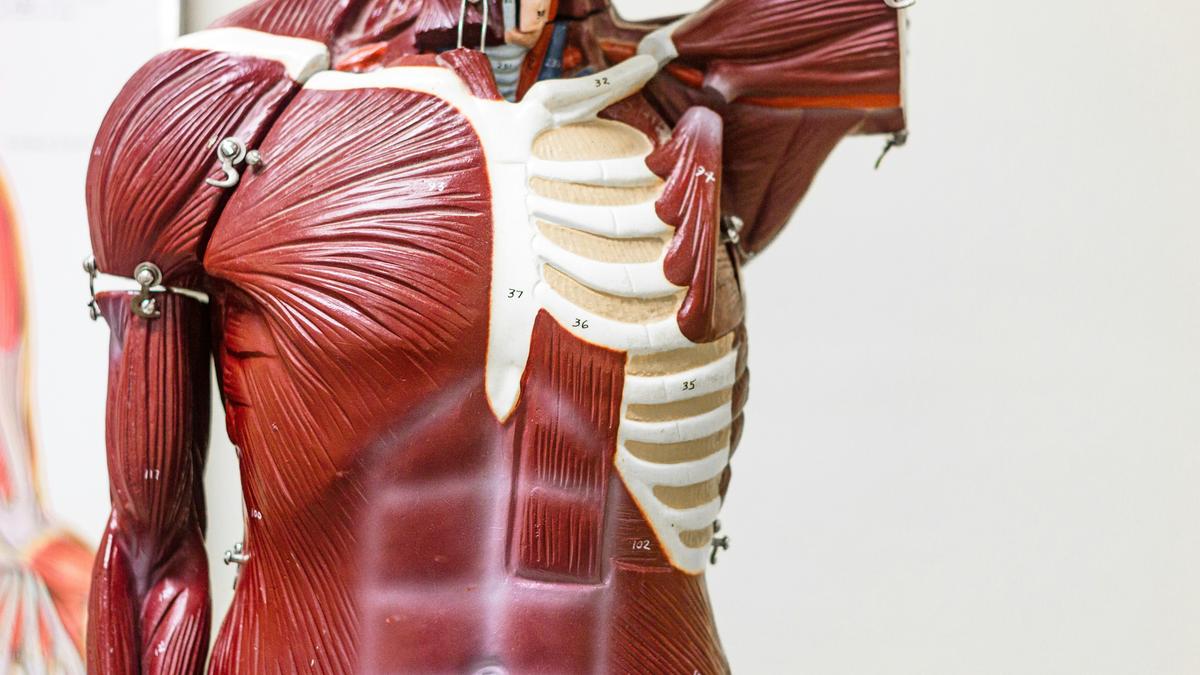Sarcopenia affects millions of people and contributes to frailty, slow recovery, and hospital readmissions in older adults.
| Photo Credit: Alan Calvert/Unsplash
As we age, it gets harder to recover from a fall, injury or even a tough workout because the body’s muscle-repair system starts to falter. Muscle stem cells (MuSCs), the in-house repair crew, stop dividing and rebuilding tissue, losing their ability to respond to damage.
A study in Cell Stem Cell on June 12 suggested this decline may be reversible. The key isn’t some futuristic therapy but a molecule already used in hospitals today.
Researchers found that five daily injections of prostaglandin E2 (PGE2), a compound involved in inflammation and used clinically to induce labour, restored muscle stem cell function in aged mice. After treatment, older mice regained the ability to regenerate damaged muscle: their muscle fibres grew larger, muscle mass increased, and strength improved by about 20% compared to their untreated peers.
The findings are important because PGE2 is naturally produced in the body, particularly after injury. It signals MuSCs to start repairs in young muscle, but in older tissue this signal fades, leaving stem cells inactive even when needed.
After PGE2 treatment, aged stem cells “woke up”, resumed dividing, participated in tissue repair, and helped restore the animals’ muscle strength. Remarkably, these effects lasted at least two weeks beyond the treatment window, suggesting more than just a temporary boost.
Even more strikingly, the outcome held true outside the body. When aged stem cells were treated with PGE2 for just 48 hours in the lab and transplanted into injured muscle, they formed new tissue at levels comparable to young stem cells. Imaging showed that these treated cells engrafted robustly, persisted for weeks, and even expanded in response to subsequent injury — evidence that PGE2 acted directly on the cells themselves, not just their environment.
To understand how, the team examined molecular changes inside the cells. PGE2 reopened regions of the genome that had become inaccessible with age. It also dialed down a stress-related pathway called AP-1, which becomes overactive in aging MuSCs. The molecule reset the cells’ internal programmes, allowing them to act more like their younger selves.
The study adds to an ongoing shift in how scientists think about ageing. For years, researchers believed age-related decline in muscle repair was driven mainly by the environment around stem cells, such as inflammation or scar tissue. But this work adds to evidence that stem cells themselves carry reversible, internal changes, opening the door to therapies that rejuvenate cells directly.
The relevance goes far beyond the lab. Sarcopenia affects millions and contributes to frailty, slow recovery, and hospital readmissions in older adults. There are no approved therapies that restore MuSC function. The new study suggests a brief intervention could one day support healing in such situations.
More research is required before this therapy can be tested in humans. But by showing that stem cell aging isn’t irreversible, this study also opens a new frontier.
Anirban Mukhopadhyay is a geneticist by training and science communicator from Delhi.
Published – June 16, 2025 05:45 am IST
